Understanding Easements and Rights-of-Way
Jan 11, 2022 | Home Technology, Helpful Tips
If you're a property owner, you've probably heard the terms "easement" and "right-of-way" associated with your property. Unfortunately, these terms can be a bit confusing. What exactly are they? And how do they affect your internet service?
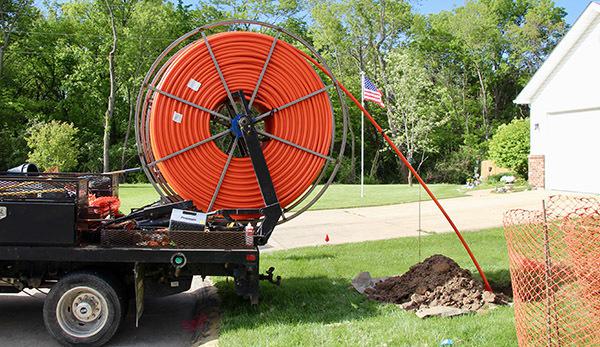
Let's start by explaining that when you buy property, it's not all entirely yours to do with what you want. Most of it is, but not every square foot. For example, if you purchase a home in a subdivision where your yard bumps up against the neighbors' yards on three sides, you may not get exclusive use of those connection points. Likewise, the front edge of your property where it meets the street might also not be entirely yours to use. Why is that?
Certain parts of your property are reserved for public use and use by utility companies and other entities. These easements and right-of-ways have specific purposes and rules. Let's look at the difference between the two and how they affect your use of the property.
Right-of-way
The legal definition of a right-of-way is "the right to build and operate a railroad line, road, or utility on land belonging to another." For example, roads are built on rights-of-way to allow non-property owners access to these common areas for transportation and other community purposes. No individual property owner has exclusive rights to a right-of-way.
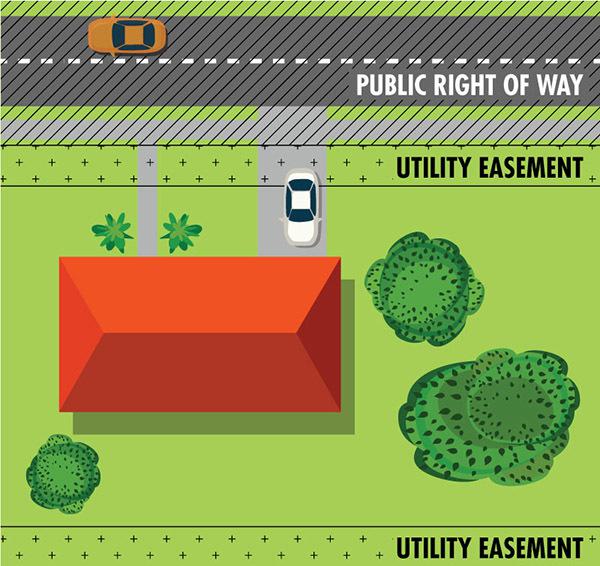
Even though a homeowner in a subdivision might legally own the land that includes part of the road in front of their property, as shown on a site survey, a right-of-way can use that strip of land for the community access point to the subdivision without compensating the property owner.
Sidewalks are another example of right-of-ways that anyone can use even though they are on the front edge of the property. They are publicly usable even though the homeowner paid for the land and is required to mow the grass around the sidewalk.
Utilities such as electricity, water, and internet typically run their mainline lines and pipes through a right-of-way because the utilities they provide extend to all the nearby properties. Utility lines are run behind homes in most cases, but certain geographic restrictions could force more creative routing. In those cases, the utility companies will usually consult with the property owner to find a good solution for everyone.
Sometimes, utilities are run alongside the road in front of the home to prevent the need for a separate right-of-way in the back of the property. This maximizes the property owner's ability to use more of their land.
Easement
While similar, right-of-ways and easements are not the same. The legal definition of an easement is "a right to cross or otherwise use someone else's land for a specified purpose." The title or deed of the land remains with the property owner, but another person or organization is granted the right to use part of that land for a distinct purpose, such as to gain access to utilities in the right-of-way for installation or repair.
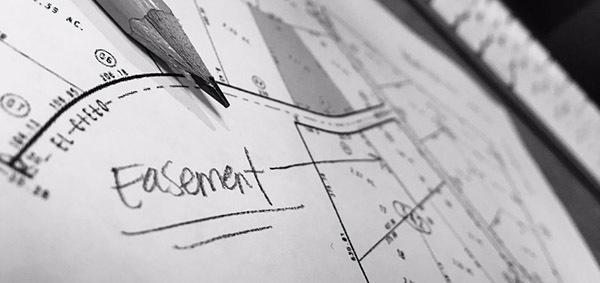
There are also non-utility easements. For example, you might legally grant neighbors access to cross your property to get to the public park behind your house. In this case, the easement becomes part of the public record of your property and carries to all future owners of your property unless legally changed by them.
Easements may be as wide as 35 feet, but that depends on the local jurisdiction. Both easements and right-of-ways are typically split evenly between abutting properties, so no one homeowner sacrifices more land than others.
Restrictions
Both easements and right-of-ways have restrictions and do not give unfettered access to everyone for whatever they want. Likewise, property owners are limited to how they can use the land through which a right-of-way or easement passes.
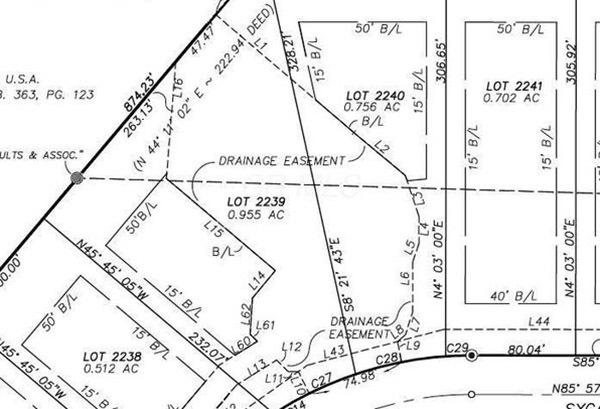
For example, no permanent structures except fences can be built on an easement. Structures such as tool sheds and doghouses can be installed, but they must be moveable upon request—unauthorized permanent structures risk being torn down by those granted access to the easement or right-of-way.
How do I find out?
To learn more about where the easements and right-of-ways are either in your neighborhood or on your property, reach out to your local zoning commission or title commission, or you can have a site survey done that shows you all the boundaries of your property.
Cooperation is key
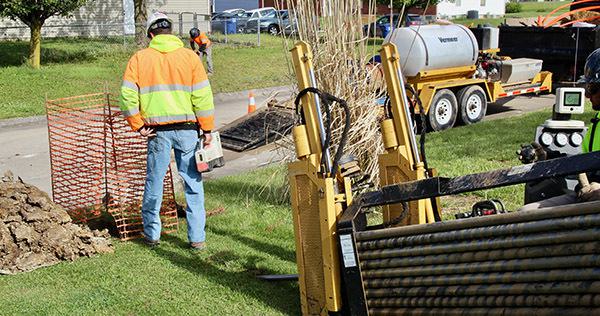
Utilities can disturb landscaping, and the property owner is typically responsible for the restoration. Usually, crews are careful, and the damage to landscaping is minimal and can be easily repaired. However, utility companies often negotiate with homeowners to cover restoration labor and costs if the work requires more upheaval.
At Gateway Fiber, we believe in working with property owners to restore their land as close as possible to its condition before we did our work. Do we have to? No. But we want to have great relationships with our customers. See this other helpful post for more information about our fiber optic internet installation process.
- easement
- right-of-way
- utility
- Fiber internet






